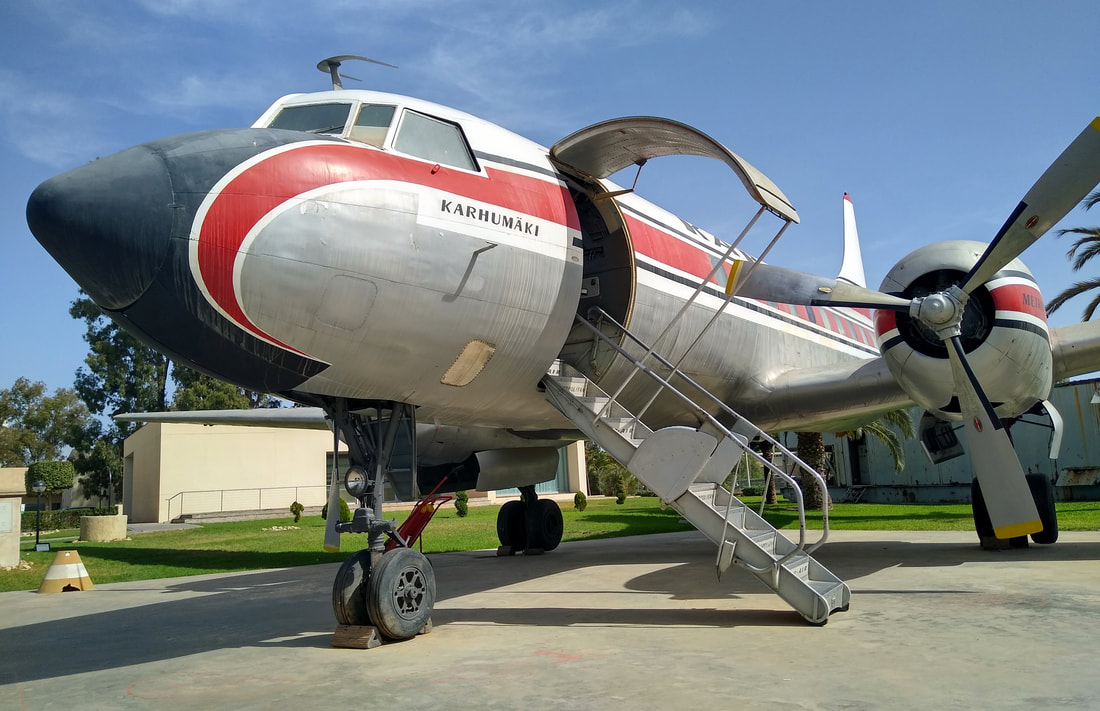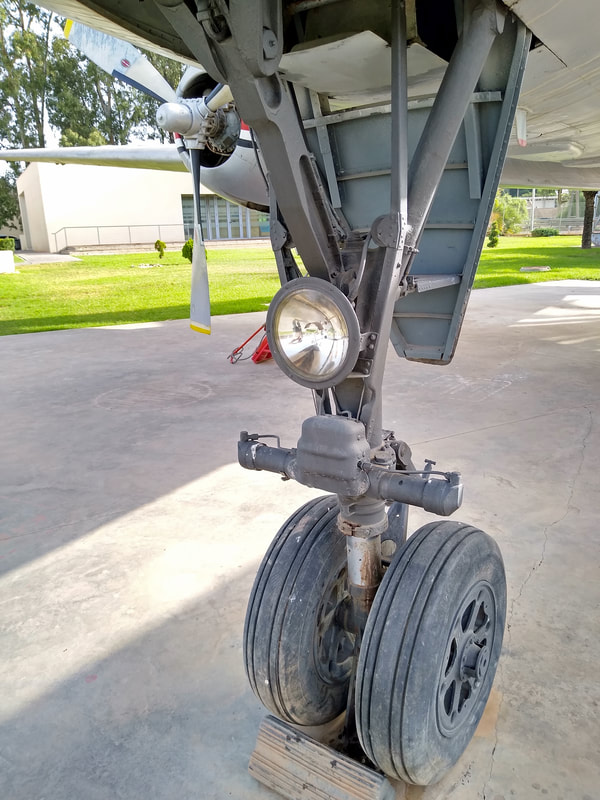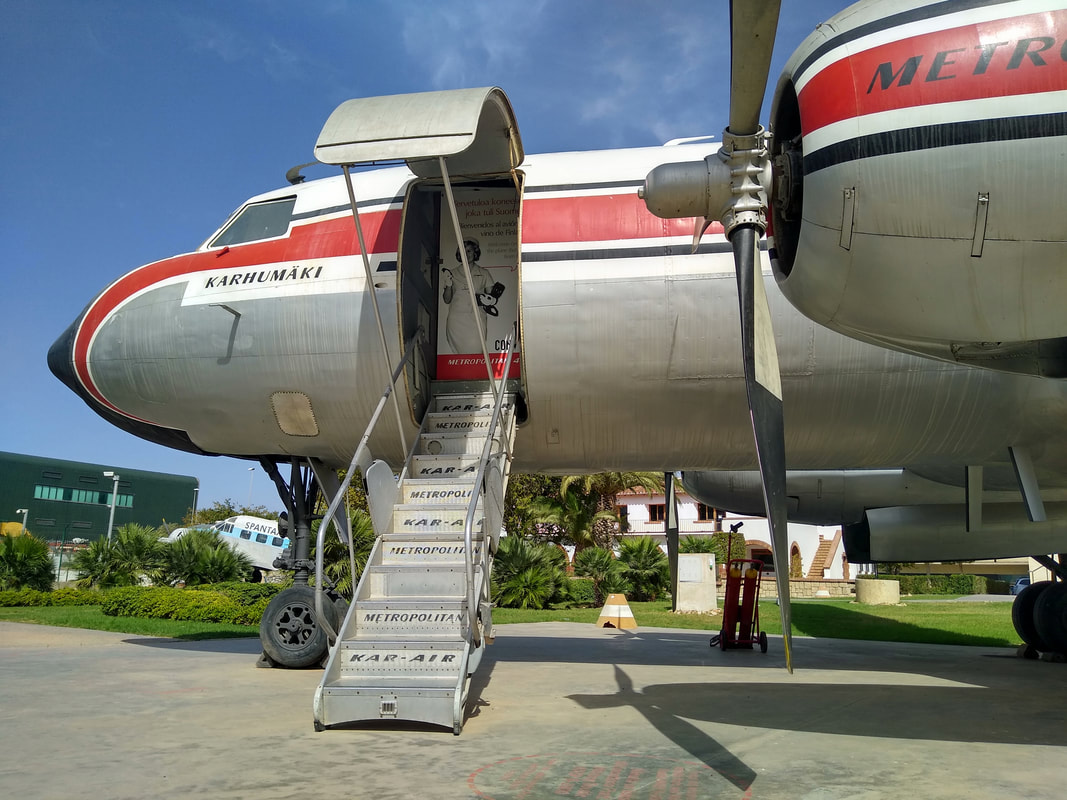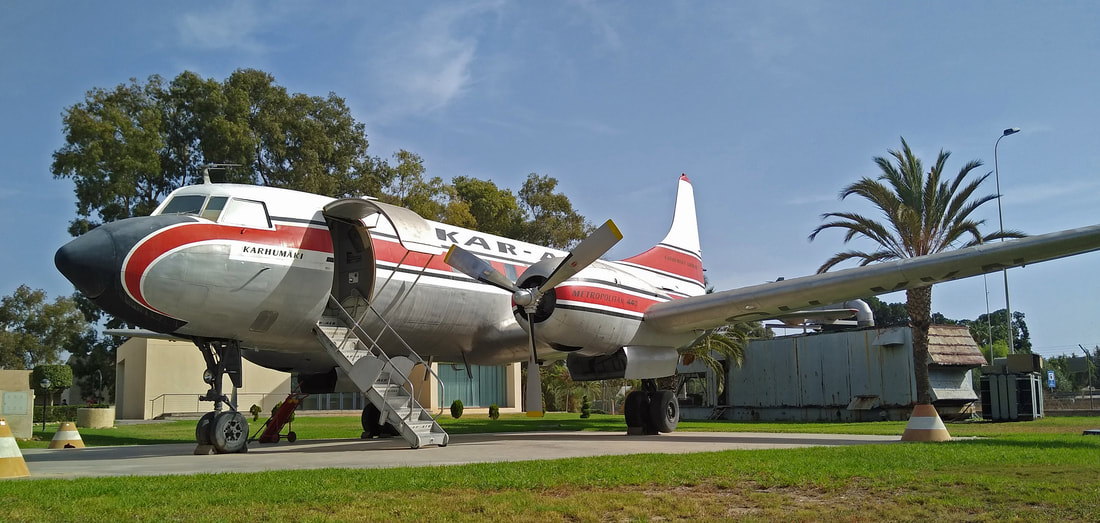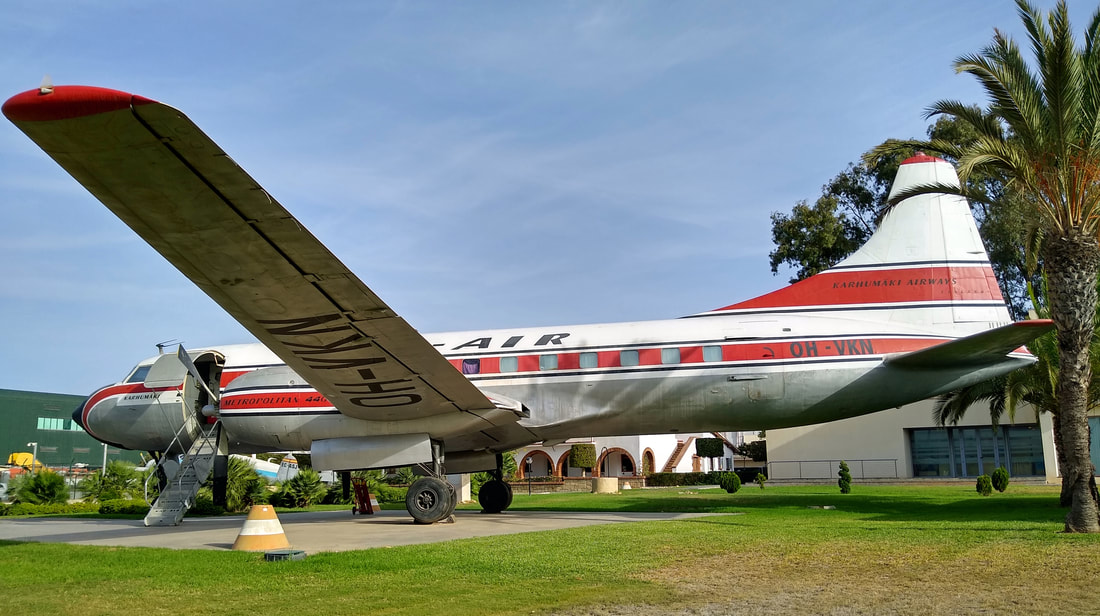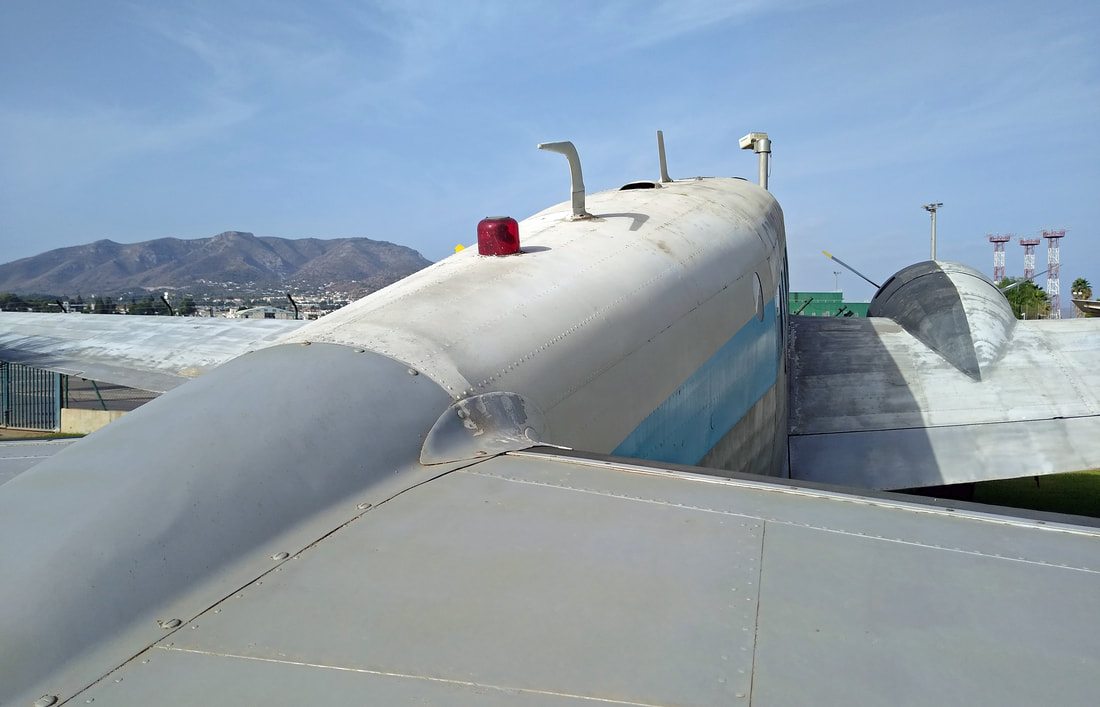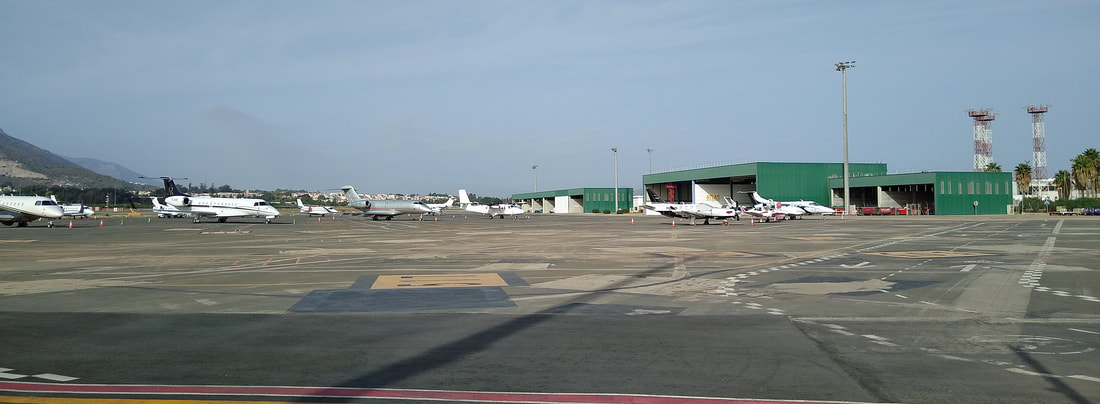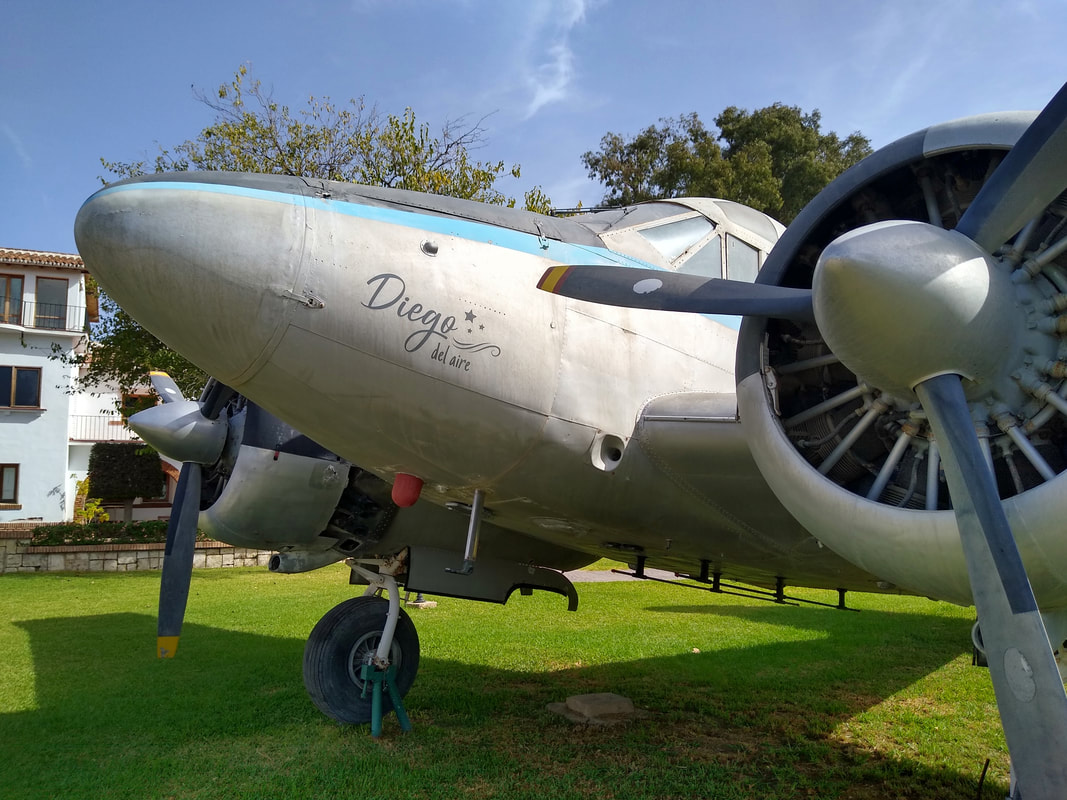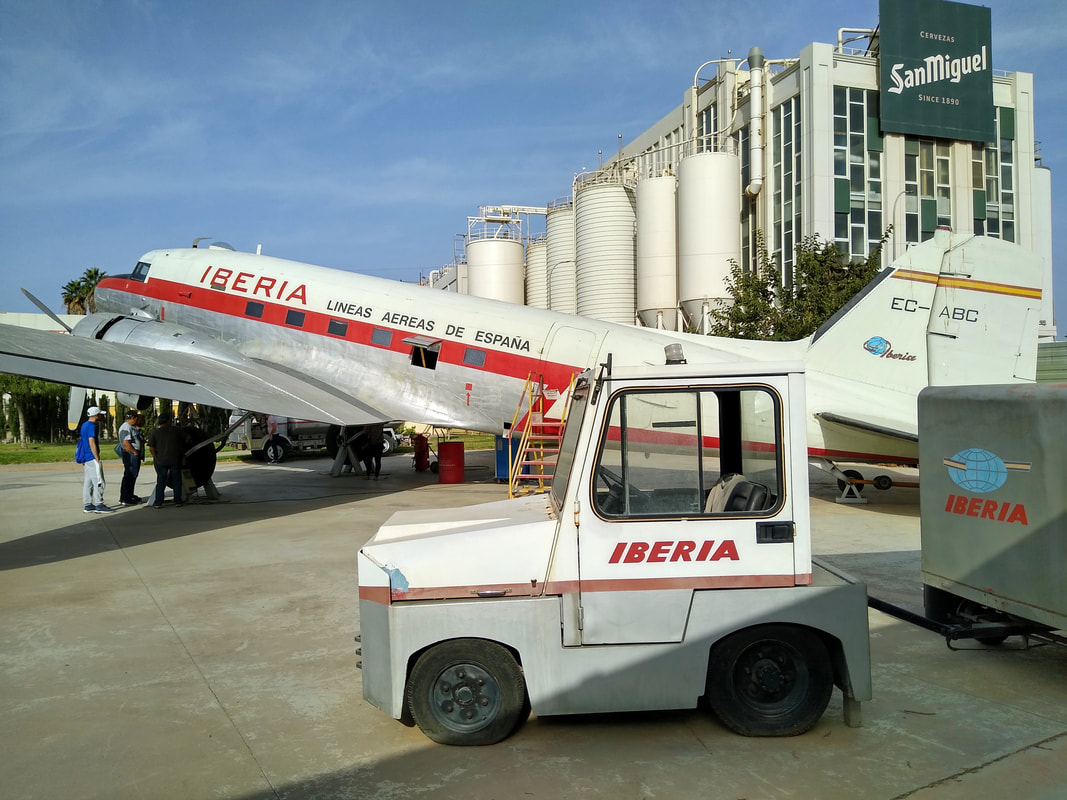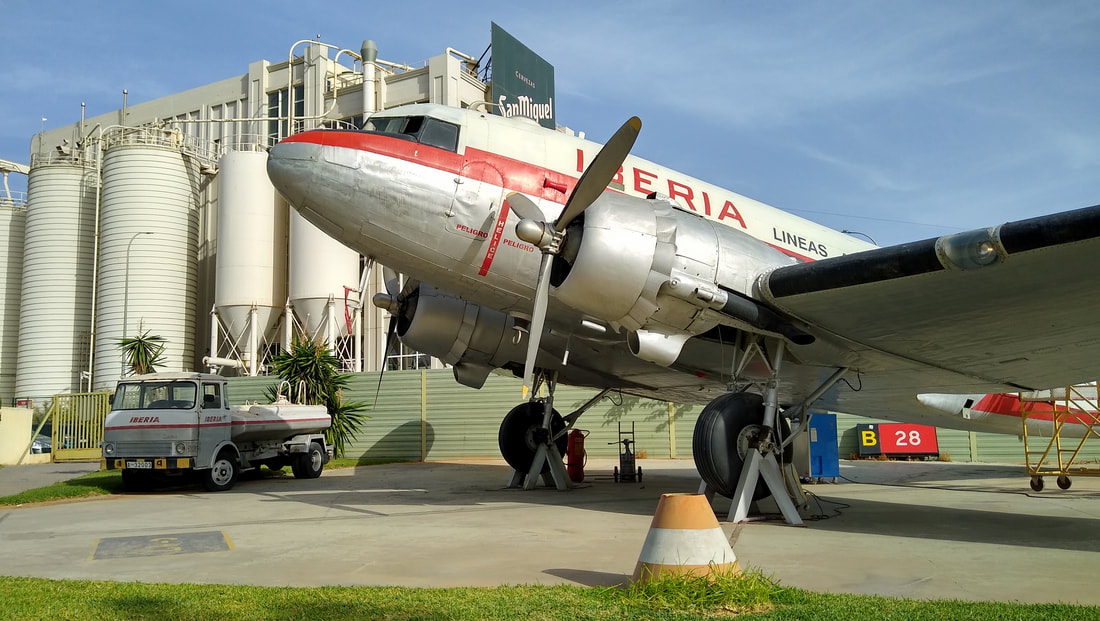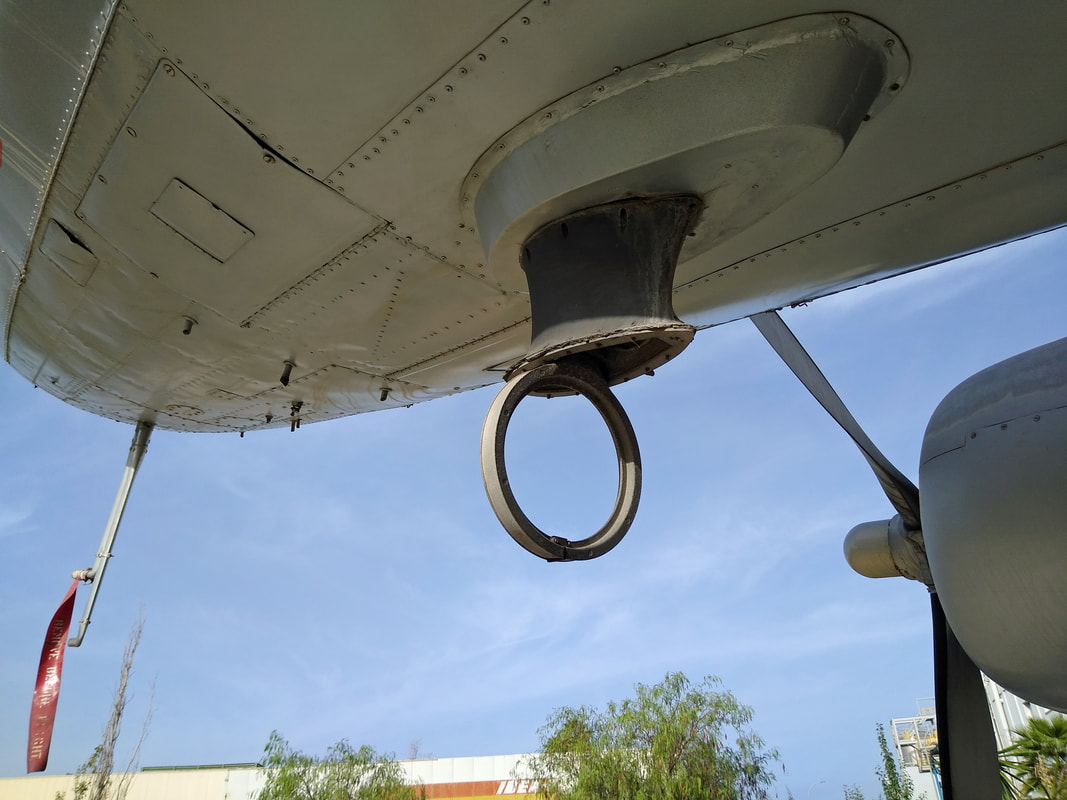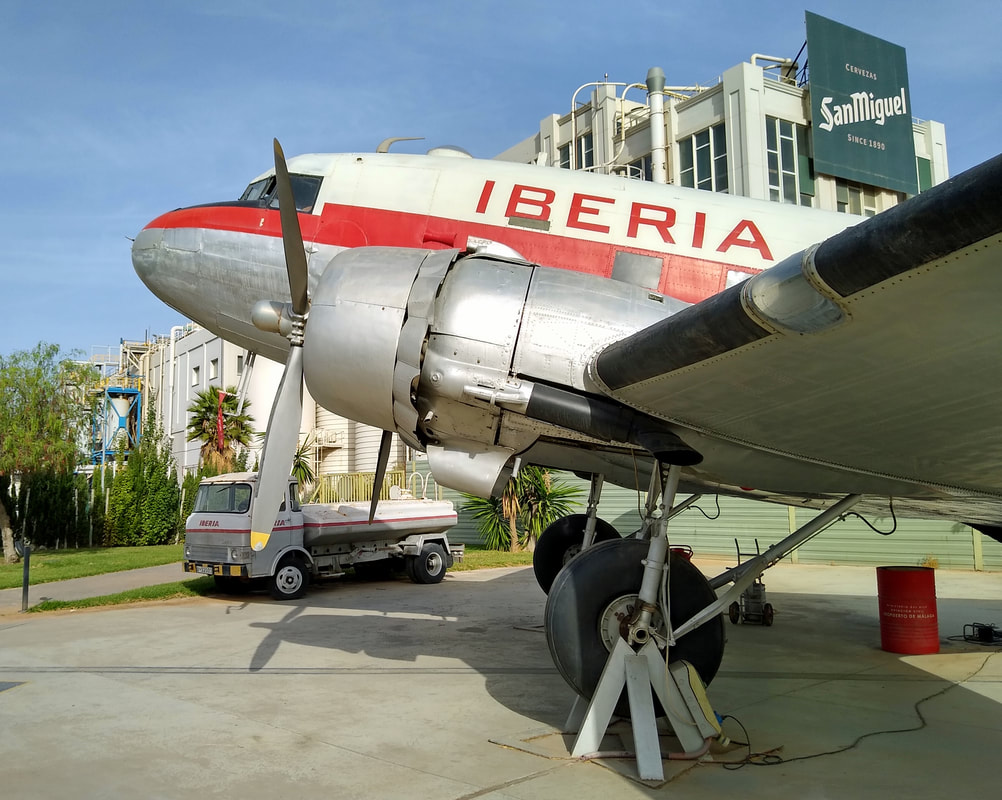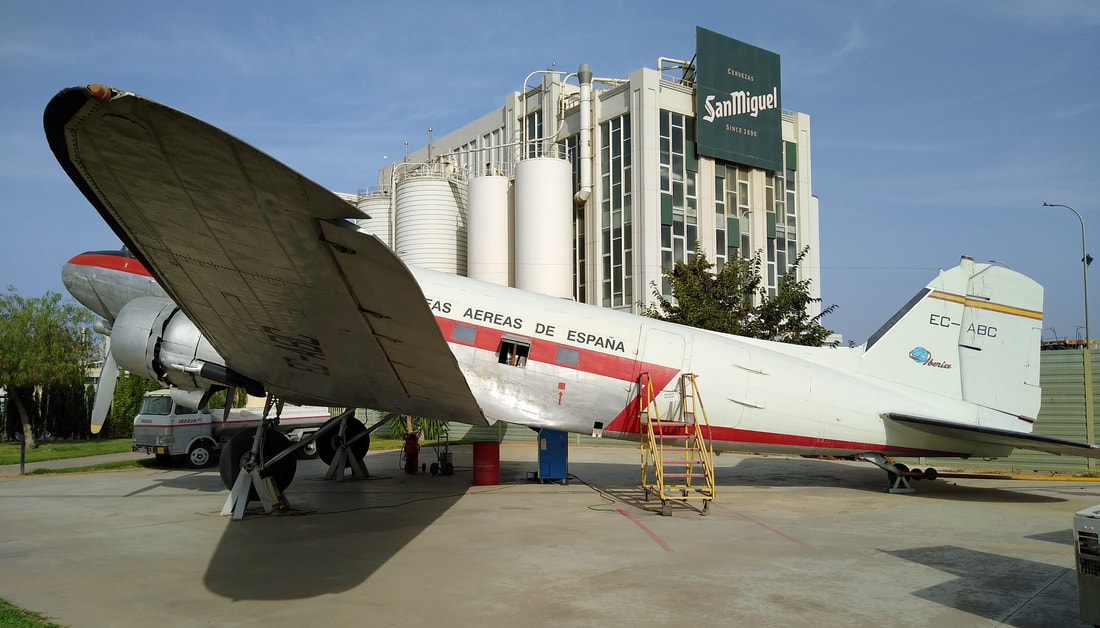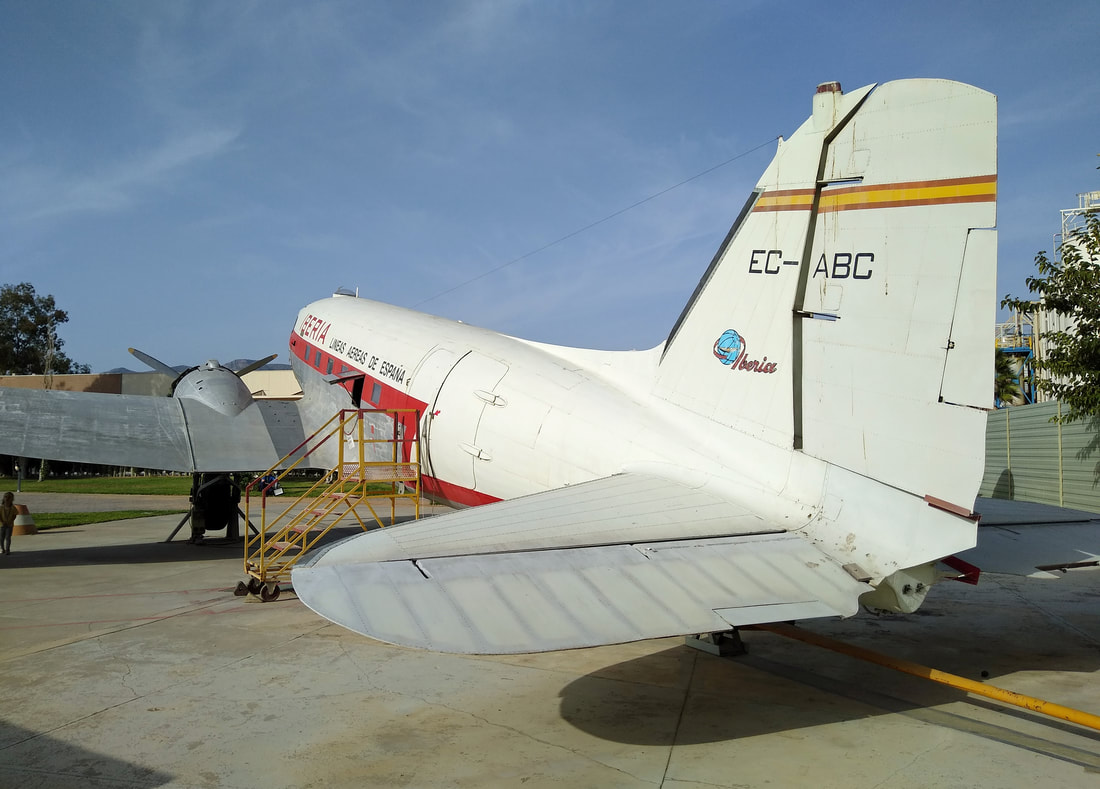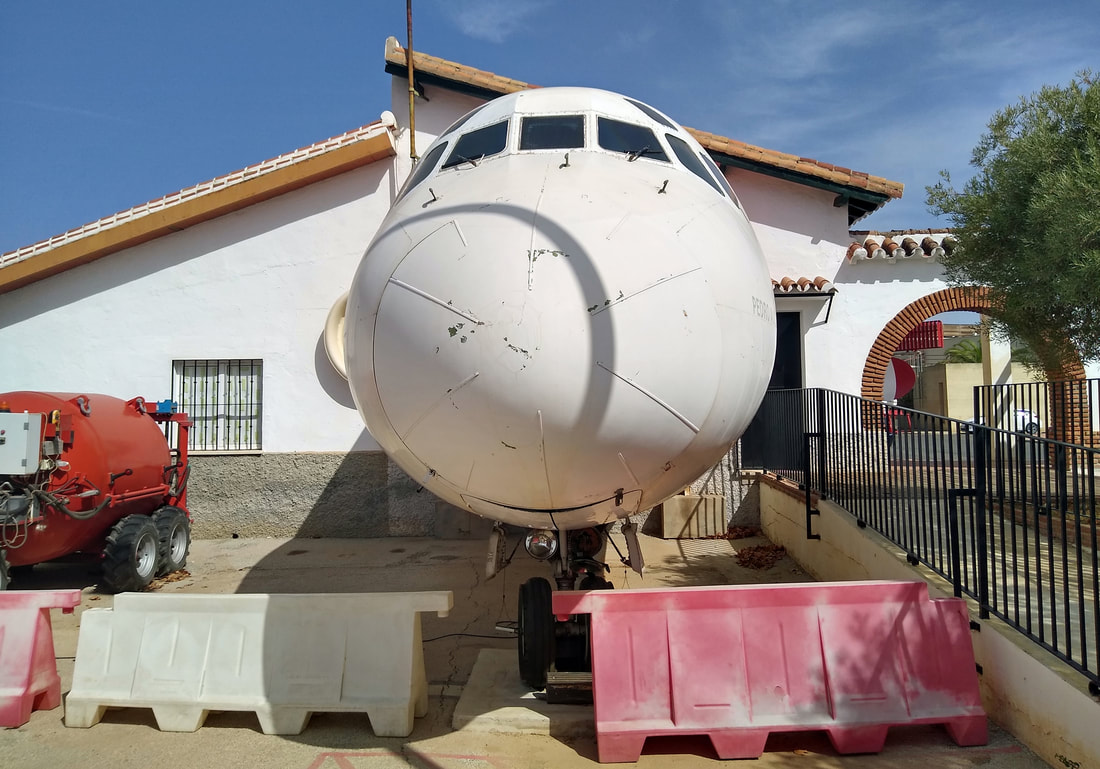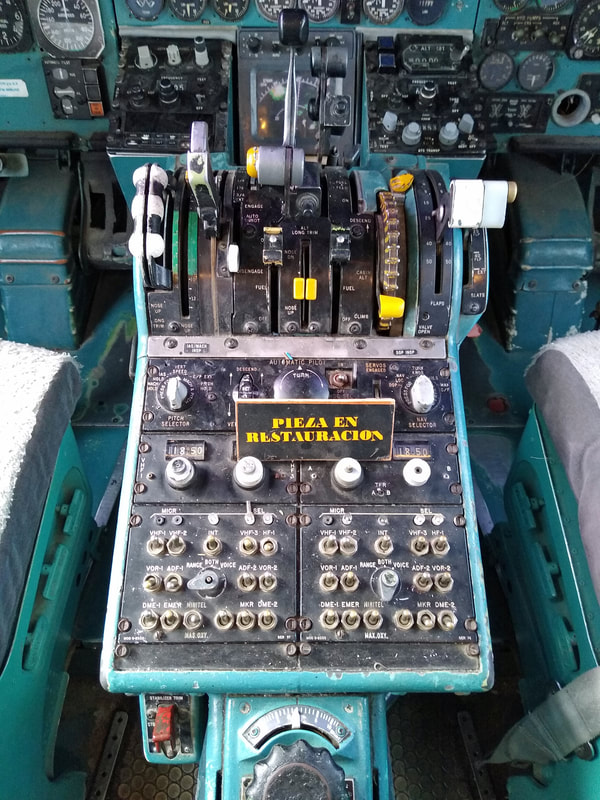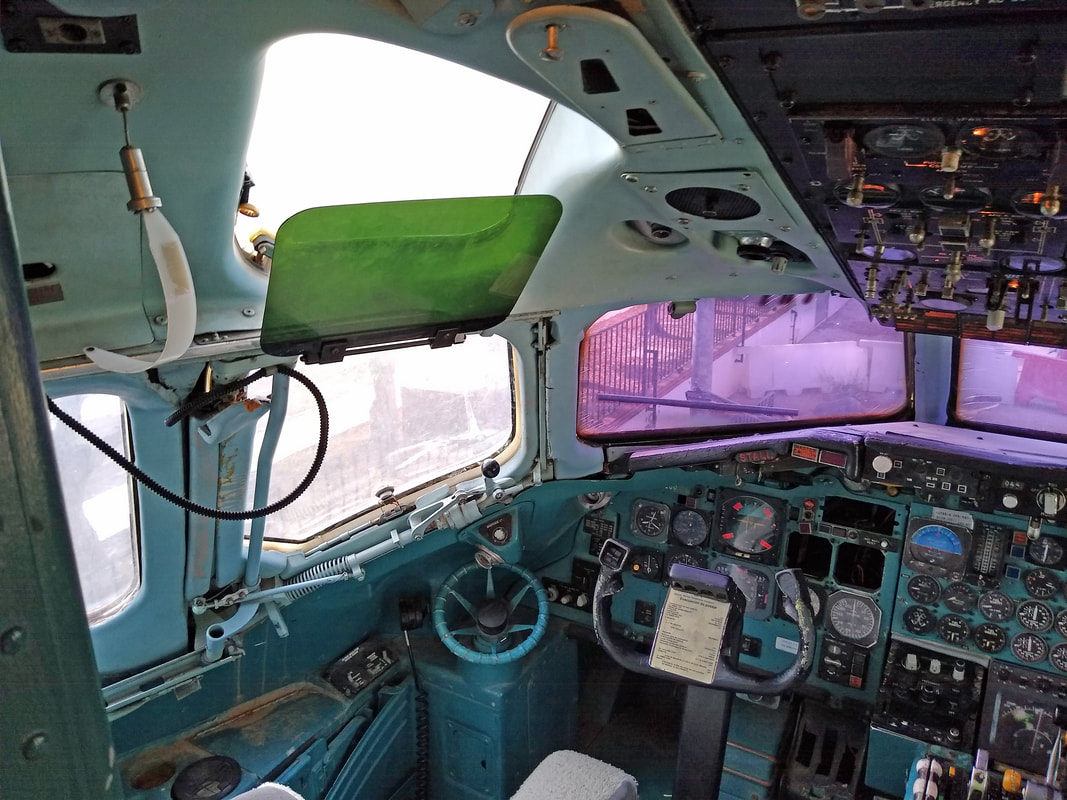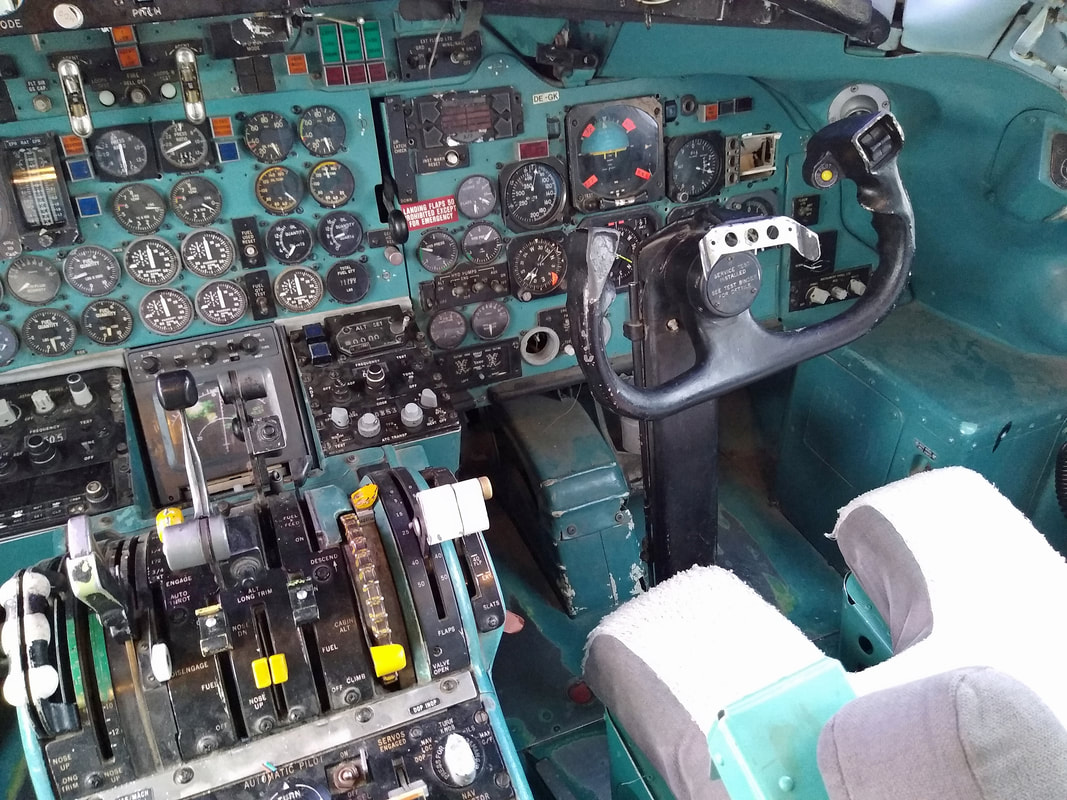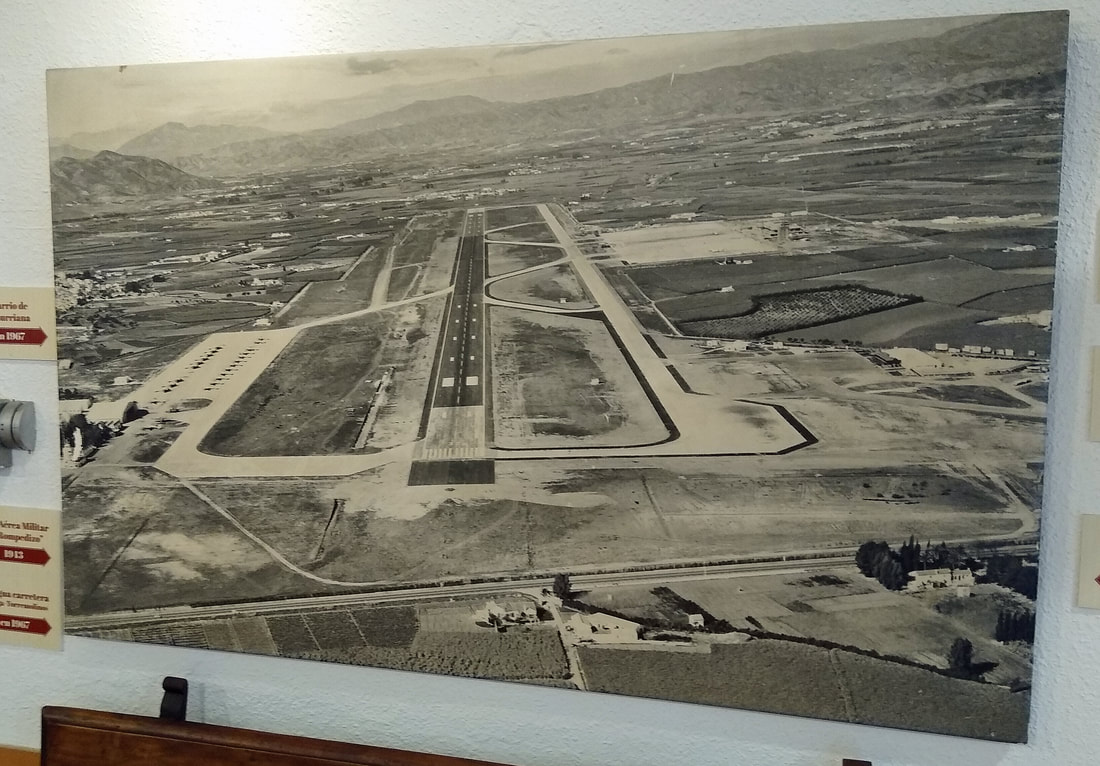Museo Aeronáutico de Málaga
|
What a gorgeous day in October 2022.
Beautifully preserved is the former terminal of Malaga airport, which is presently the aviation museum.
One of the Museum's buildings is the first passenger terminal at Malaga Airport. When it was built, the entire current airport area was intended for agricultural use. Maybe that's why it looks like a farmhouse instead of an airport. |
Take a seat at the airplane viewing deck to rest and watch the airplane traffic take-off and land in front of you.
American stars from yesterday-year seen here resting under a gorgeous autumn sun.
Kar-Air was an airline from Finland. Having offered mainly holiday charters.
Kar-Air originally called Karhumäki Airways.
Kar-Air was founded in 1947, as an aircraft manufacturing and maintenance company, owned by Karhumäki brothers.
A ‘sister-plane’ of the OH-VKN has been painted in the original Kar-Air livery at the Museo Aeronautico de Malaga to celebrate the 50th anniversary of the airport, since OH-VKN was the first plane ever to have landed there.
The Convair 240 / 340 / 440 family of airliners was produced between 1947 and the mid 1950’s as a DC-3 replacement.
Convair stands for Consolidated Vultie Aircraft Corporation.
Metropolitan 440, OH-KVN, enjoys the sunshine.
Metropolitan is a region consisting of a densely populated urban core and its less-populated surrounding territories.
This Convair 440 rolled-off the San Diego production-line in February 1958. With construction number 503 she was delivered to SAS as SE-BSY. The Metroliner passed through a succession of owners, including National air Charter from South-Africa and Cochise Airlines, before ending up with Air Resorts Airlines in November 1982. In May 2000 she was sold to aircraft broker Aeronautical commercial Office Inc. Keep in mind; - this aircraft never flew for Kar-Air!
I walked around the Convair, admiring her lines.
What a gorgeous day in October 2022.
This frame has been built in 1955 for the Royal Air Maroc Air Force.
The Beech-18 is a little ungainly and without grace on the ground.
The museum offer you an observatory from which you will be able to see first-hand the parking of private aircraft, the head of the runway, and military aviation, with the Malaga air base in the background.
Though painted in Spantax colors and marked as ‘EC-ASJ’, this Beech E18S never served with Spantax. The real EC-ASJ is based at Madrid-Cuatro Vientos, also in Spantax livery.
Spantax S.A. was a Spanish leisure airline headquartered in Madrid, that operated from 6 October 1959 to 29 March 1988. Spantax was one of the first Spanish airlines to operate tourist charter flights between European and North American cities and popular Spanish holiday destinations and was considered a major force in developing 20th-century mass tourism in Spain. Its popularity and image faded from the 1970s onward when a series of crashes and incidents revealed safety deficits, which, combined with rising fuel costs and increasing competition, resulted in the company facing severe financial difficulties that led to its demise in 1988.
The Twin-Beech was for it's day, pretty fast. It could carry a hell of a load without complaint and it was built tough for the bush with it's tall landing gear and tailwheel. It could land in a very short distance and could take real punishment.
This De Havilland Dove is hanging on by its teeth, hopefully it will stay 'lucky' for some more time. She was constructed as a De Havilland Dove 7A in 1963. Registrated CN-MBA she was delivered to the Royal Moroccan Air Force and was struck off charge in the mid 70's. When her military career was over, she was sold, in the late 70's to Visionair International Inc. from Miami, FL, as N9888A. During the previous years the Dove was preserved at Malaga, falsely painted as Martin's Air Charter PH-VLA.
The Dove is hanging on by its teeth.
This C-47 has been manufactured in 1945 at the Oklahoma City plant as a C-47D Skytrain for the US Army Air Force. When her military career with the Americans was over, she was sold via broker Charlotte Aircraft Corp. to the Spanish Air Force in May 1969. When her military career was over, her civilian life started as EC-CPO for Aerotransporte de Espana. In the late 70’s, after the demise of Aerotransporte, her service life was over and she was stored at Zaragoza. In August 2003 she was transported by road to Malaga’s Museo de Aeronautico.
This DC3 was stored for more than 20 years at Zaragoza airport.
A LP-21 loop antenna attached to the underside of Douglas DC-3 ‘EC-ABC’ was used as a automatic radio compass. The rotatable loop antenna was encased in a teardrop-shaped housing.
What a treasure.
Beautiful old DC-3 EC-ABC flew for many years with the Spanish Air Force.
I walked around it, admiring its lines.
EC-ABC glinting in the sun.
Iberia; - Its name derives from its ancient inhabitants whom the Greeks called Iberians, probably for the Ebro (Iberus), the peninsula's second longest river.
Such a classic livery.
After spending 25 years of its lifetime in the Spain, operating for Aviaco, this Douglas DC-9-32 was transferred to Iberia in September 1999. After only two years of service with Iberia she withdrawn from used at Madrid.
In December 2002 she was scrapped but her cockpit section was preserved at the Museo Aeronautico de Malaga.
The sun has faded the colors of its livery. Ultra violet light is the culprit, bleaching out colors.
Stains caused by rain persist as seen here streaking down the fuselage.
Let me stick my head into the cockpit for a quick look!
You're looking at the control center of a 1974 built Douglas DC-9.
The DC-9-32 overhead panel.
Not a CRT in sight. A far cry from today's glass-cockpits.
Center panel and throttle quadrant.
Capt's instrument panel and tiller.
Part of the DC-9 ‘stone age’ flight deck. Classic and nostalgic!
F/O's instrument panel. Pilots had a heavy work load those days!
Flip-through a pre-jet age aeronautical magazine.
A trip to the past to the only international airport of that time that is still standing.
Go up to the Control Tower from which the only three daily planes were guided.
- The End -




